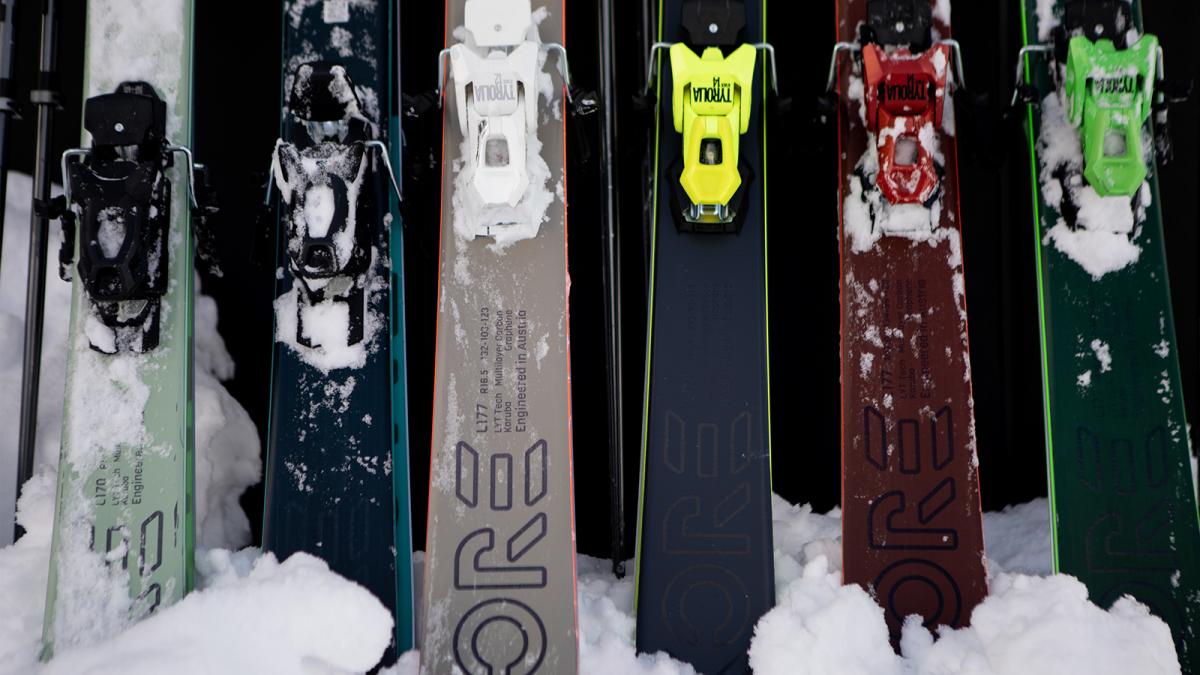We can safely say that in the decade behind us, the properties of the skis have been refined in the various categories. 20 years after the appearance of carving, large swings were still experienced. Today, traditional alpine skiing has a wide range of skis in terms of shape, length and width.
The style, category, and hardness of the skis to be chosen are obviously determined by several factors. We have our own technical knowledge, physical fitness, and style. In addition, it is also important what kind of slopes and conditions we ski on - but it is not always possible to give a clear answer to this. Of course, it can also be a solution if we have several sets, but a good seller will most likely help us find the right ski for us.
Piste vs all-mountain skis:
With the exception of the extreme, rarely sought-after categories (freeride, freestyle), ordinary customers will choose between piste skis and all-mountain skis. Unfortunately, it's easy to make a mistake at the very beginning, because the name of the pistes suggests that we have to buy them for the Austrian pistes, for vigorous skiing. In reality, however, an all-mountain skis is a better choice for most domestic buyers. With these, all slopes can be skied at an excellent level, and at the same time, all-day sports are less tiring with them.
Piste skis can actually be used on perfectly tamped pistes in the best condition. These are "dumb" versions of the stiffest slalom and downhill skis used for racing, which can be handled by more athletic amateur skiers. They enable truly dynamic skiing with quick edge changes. They are made with a full bridge (tip-to-tail rocker) (this means that when you put the skis on the ground, only the two ends come down, the middle - like a bridge - rises). For this reason, more force is required to bend the skis, but it also lifts faster at the end of the arc ("kicks back"). Due to its shape, the front of this shaped skis is more prone to getting stuck in the snow than an all-mountain ski.
All-mountain skis have a completely different bend. The rocker part does not start from the tip, but has approx. 20-30 cm, which always reaches the snow. We can bend the smaller bridge with less energy, so with an all-mountain bar we get less tired during the whole day's program. These skis are also wider than piste skis, and due to the design of the ski, the tip does not "bite" as much. Although it takes a little longer to change the edge, the ski is calmer and the feeling of dynamic recoil is less. Top quality materials are also built into these skis. Practically the same curves can be drawn with them as with piste skis, only less dynamically. In the afternoon or spring snow, on uneven slopes, or for skiers with a calmer temperament, it is usually more enjoyable to slide with an all-mountain board than with a piste ski.
In terms of numbers, the biggest difference is in the width, the piste skis are approx. They are 66-75 mm wide in the middle, the all-mountain models are made up to 74-90 mm. There is a misconception among buyers that all-mountain skis are for "off-road". Basically, this is not the case. They are mainly for pistes, but they are also suitable for skiing on unorganized pistes, even in the case of packed snow. Hard skis are also available in the all-mountain category, from beginner to advanced, anyone can choose the right one.
Knowing the habits and difficulties of domestic skiers on the slopes in general, there are many people for whom it is worth looking among the all-mountain skis. No one should buy a ski that is not right for them! Of course, piste skis also have a right to exist, primarily in the case of dynamic, trained, routine skiers, especially in the case of good piste conditions. In the afternoon, or as you get tired, you can control the skis less, which puts more strain on your knees and joints, so it's worth choosing equipment that best reflects the mentality and fitness of the skier.
Structure and hardness:
Technologies have not changed radically in the past period. They haven't been able to come up with anything better than the wood core. Different types of wood are glued together in layers, even like a parquet, thereby achieving different properties. The wood cores are reinforced with titanium or steel plates, with extra plates on the competition plane, which further stiffen the ski. In the higher categories - not only on the competition level - the wood materials are selected by hand and the skis are also matched by hand. With all of this in mind, it's no surprise that "cheap" skis don't exist. Softer composite skis have been reduced by all manufacturers, and we do not deal with them in our store either, at least in the men's category. You can also get one in the beginner women's category, and children's skis are made this way. Until now, the durability and flexibility of wood could not be achieved with plastic.
In the case of skis, the goal is to reduce the vibration of the nose and to keep the edge more stable in the curve at higher speeds. In addition to the internal structure made of wood materials with different properties, we can also find other stability-enhancing solutions. For example, at Fischer, some skis are equipped with a special window at the nose, but you need to know how to ski well to take advantage of this. It is not by chance that these are sold glued as standard. At Völkl, they use a serious vibration-absorbing overlay, which really works well in practice. Atomic tries to achieve this result with the Revoshock system, but all serious manufacturers are constantly improving their high-end skis from this point of view as well.
Bindings:
For ordinary users, the situation with bindings has long since been clarified. The all-mountain and amateur piste skis come with system bindings. The rail is integrated into the ski, into which the binding must be inserted, then adjusted according to body weight and skill level. This is done in the specialist shop. During installation, the binding is fixed in the middle by a screw, thus the jaw and the end of the binding can move in relation to each other lengthwise and minimally crosswise. It does not stiffen the batten like drilled joints. The solution mechanism is very advanced and meets all safety requirements. In connection with bindings adjusted in a specialist shop or rental company, you practically do not hear about accidents.



